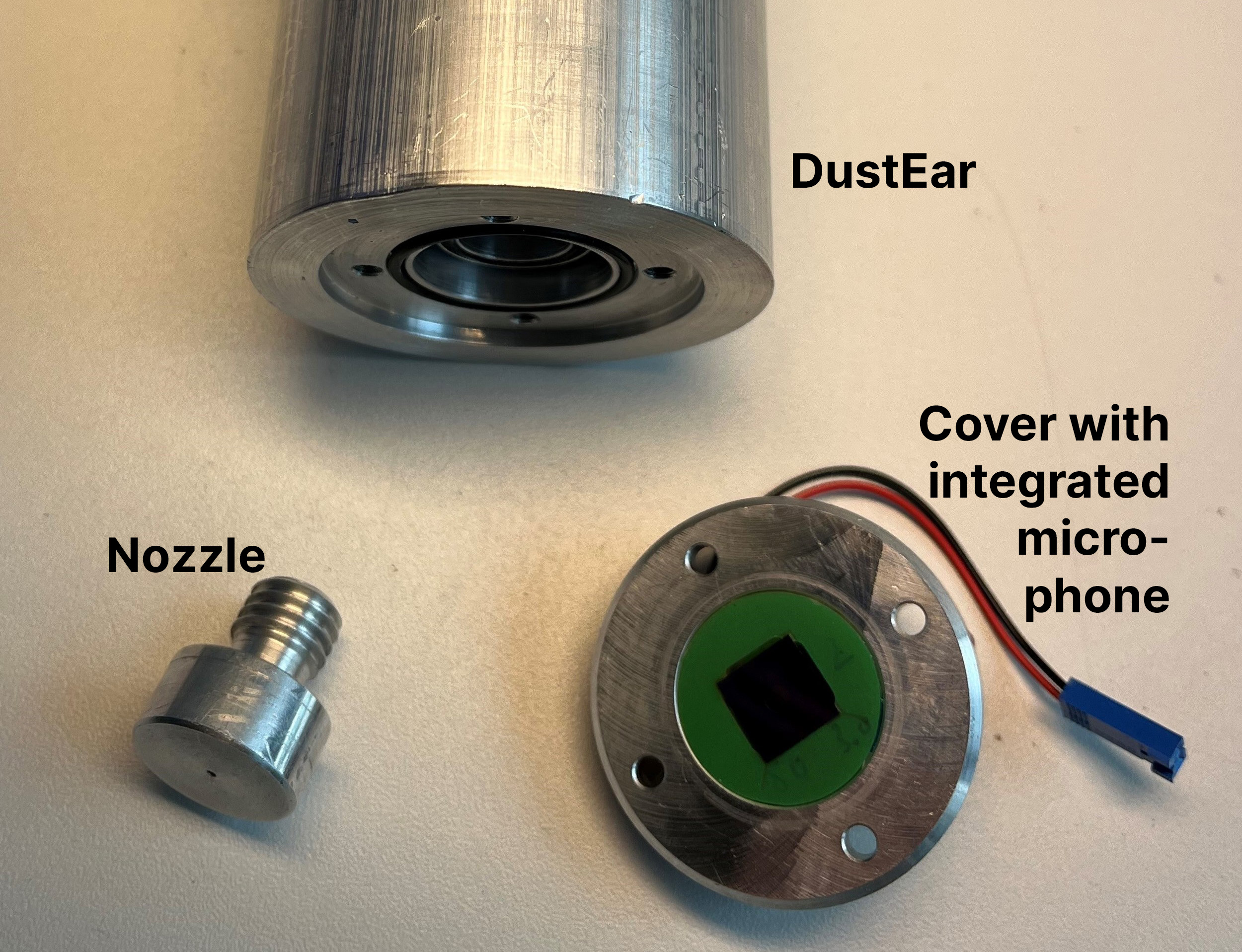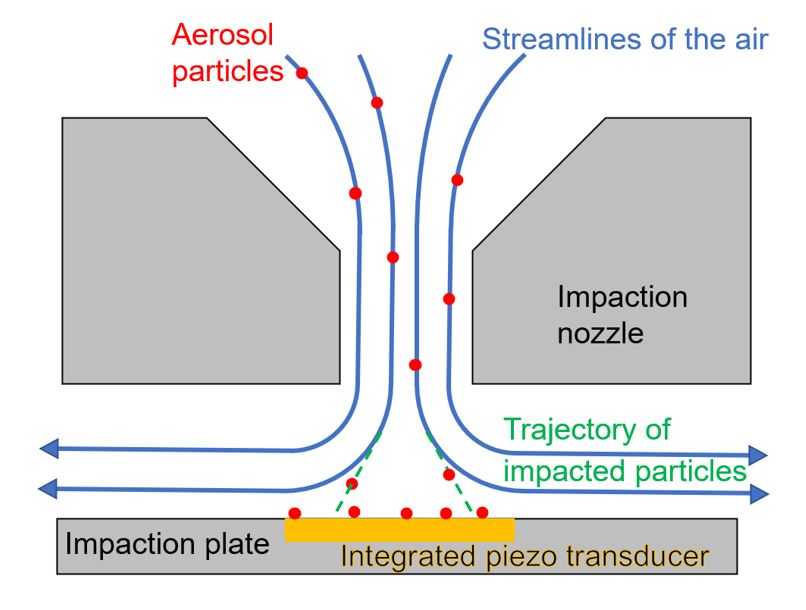
DustEar: Detection of single, micrometer sized aerosol particles by acoustic impaction
The FHNW Institute for Sensors and Electronics has developed a new measurement technology that detects aerosol particles by their impaction on a piezo transducer and allows therefore single particle mass characterization.

Technologies
- Acoustic Detection Method
- Piezo Transducer
- Impactor
- Single Particle Mass Characterization
Objectives
Development of a new sensor based on acoustic impaction to detect the mass of single aerosol particles directly, without artefacts and with a simple and robust measurement setup.
Background
Human health is affected by exposure to high or long-term aerosol concentrations. Due to their small size, aerosol particles can reach our lungs via the respiratory tract and enter the bloodstream, where they can cause serious diseases. Therefore, limit values for aerosol mass concentrations are specified by the WHO and need to be monitored. Due to the heterogeneity of aerosol concentrations and their complex interactions with the environment, long-term measurements of air pollution require both high spatial and temporal resolution to provide reliable information on variations or trends.
Results

Our measurement principle uses a mechanical impactor setup with a nozzle that accelerates the particles before they impact. A piezo transducer is mounted on the impaction plate, which detects the momentum transfer of each impacted particle as a characteristic signal pulse whose amplitude is proportional to the particle mass.
Customer-designed microphones, an optimized mechanical and electrical setup and software code for a precise data evaluation were developed in this project. Microphones and acceleration nozzles were specially designed in collaboration with CSEM SA and FEMTOPrint SA. Our measurement principle is very robust against noise caused by vibrations or the air flow and at the same time sensitive enough to detect impacting particles down to a mass of a few picograms or a diameter of a few micrometers. The setup can also be used at reduced pressure, which further improves the lower detection limit.

In a next step the goal of the project is to further develop and miniaturize this promising and unique measurement technique.
References and documentation
The development of our DustEar measurement system for single aerosol particle characterization was published in IEEE Sensors Journal. This work was awarded with the Swiss Aerosol Prize 2022 from the Swiss Lung Foundation that is given annually to the best scientific publication in the field of international aerosol research, written from within Switzerland.
Project information | |
|---|---|
Execution | |
Duration | 1.5 years |
| Funding | Innosuisse |
| Team | Prof. Dr. Ernest Weingartner (Lead), Nadine Karlen, Tobias Rüggeberg, Peter Steigmeier, Patrick Specht |
